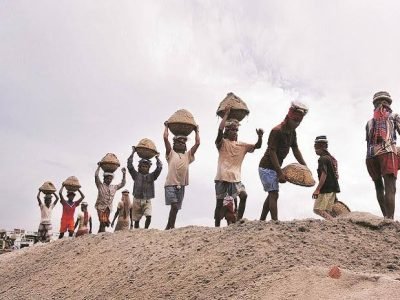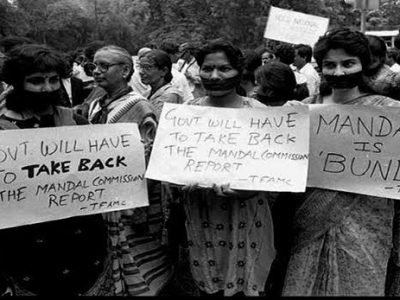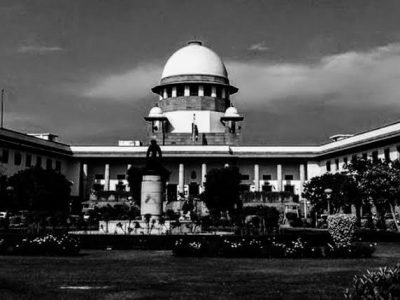
Author: Shruti Majumdar, 3rd year BA. LL.B (Hons.) student at University of Calcutta.
Indian Young Lawyers Association v. The State of Kerala
INTRODUCTION
The Sabarimala Temple is a Hindu temple on Sabarimala Hill, within the Periyar Tiger Reserve, in the Perinad Village of Kerala’s Pathanamthitta district.[1] It is one of the many famous annual pilgrimage sites, with an average 40 to 50 million worshippers attending each year. [2] The temple is devoted to Ayyappan, also renowned as Dharma Shasta, a Hindu Brahmachari deity who is said to be the child of Shiva and Mohini, Vishnu’s feminine embodiment.[3]
The current case concerns a crucial problem, namely, “Women’s Entry into Sabarimala Temple”. The Ayyappa temple has sparked controversy because it prohibits women of menstruating age (10-15 years old) from entering the temple.The Indian Young Lawyers Association brought this case before the Hon’ble Supreme Court of India in 2006 as a Public Interest Litigation (PIL). According to the Association, the ban on women accessing the shrine is discriminatory since it contradicts Articles 14, 15, 17, 25, and 26 of the Indian Constitution.[4]
Women’s absence from the Sabarimala Temple was explained by Rule 3(b) of the Kerala Hindu Places of Worship Act, which was enacted by the government under the jurisdiction of the Kerala Hindu Places of Worship Act (Authorisation of Entry Act). Section 3 of the Act mandated that places of public worship be open to Hindus regardless of any sections and races, according to religious denomination-specific laws.
However, Rule 3(b) called for the prohibiting of “women at such times as they are not permitted to access an area of public worship by tradition and usage.” Articles 25(1) (freedom of worship), Article 26 (freedom of religious groups to control their own practises), and Articles 14 and 15(1) (freedom of religion) were contrasted against these legislations (equality and non-discrimination).[5]
Essential Details of the Case:
- Case number: Writ petition (Civil) no. 373 of 2006
- Citation: (2019) 11 SCC 1; 2018 (8) SCJ 609
- Petitioner(s): Indian Young Lawyers Association; Dr Laxmi Shastri; Prerna Kumari; Alka Sharma; Sudha Pal.
- Respondent(s): The State of Kerala; Travancore Devaswom Board; Chief Tanthri of Sabarimala Temple; District Magistrate of Pathanamthitta; Nair Service Society; Akhil Bhartiya Ayyappa Seva Sangham; Ayyappa Seva Samithi; Ayyappa Pooja Samithi; Dharma Sanstha Seva Samajam; Akil Bhartiya Malayalee Sangh; Sabarimala Ayyappa Seva Samajam; Kerala Kshetra Samarak Shana Samithi; Pandalam Kottaram Nirvahaka Sangham; Sabarimala Custom Protection Forum
- Concerned statutes and provisions: Articles 14, 15(1), 25(1) and 26 of the Indian Constitution. Kerala Hindu places of public worship (Authorization of Entry) Act, 1965 [ Rule 3b ].
- Petitioner’s Lawyers: R.P. Gupta; Raja Ramachandran (Amicus Curiae); K. Ramamoorthy.
- Respondent’s Lawyer: Jaideep Gupta; Liz Mathew; Venugopal, (Travancore Devaswom); V.Giri, (State of Kerala); Rakesh Dwivedi; K. Radhakrishnan.[6]
- Bench: Chief Justice of India Dipak Misra, Justice A M Khanwilkar, Justice R F Nariman, Justice D Y Chandrachud, and Justice Indu Malhotra.
- Date of Judgement: 28th September, 2018.
FACTS OF THE CASE
1.Women (of menstruating age) were barred from accessing the Sabarimala shrine, which is one of Kerala’s most prominent temples. Bindu and Kanaka Durga, both in their early 40s, entered the hilltop shrine around 3.45 am and attempted to step foot in the temple but were denied due to threats of physical assault.[7]
2. A group of five women from the Indian Young Lawyers Association filed a Public Interest Litigation (PIL) in the Hon’ble Supreme Court of India, challenging the temple authorities’ century-old restrictive procedure. It was argued that Rule 3(b) of the Kerala Hindu Places of Worship (Authorization of Entry) Rules, 1965, which specifies that “Women who are not by tradition and use permitted to join a site of public worship shall not be entitled to enter or offer worship in any place of public worship,” was a breach of the Constitution of India’s basic fundamental rights.[8]
3. The petitioners asked the court to issue an appropriate writ commanding the Kerala Government and the Devaswom Board of Travancore to allow female worshippers between the ages of ten and fifty to access the Sabarimala temple, which had previously been forbidden to them due to certain customs and usages, and to state Rule 3(b) of the Kerala Hindu Places of Public Worship (Authorization of Entry) Rules 1965, as unconstitutional being violative of Articles 14, 15, 25 and 51A(e) of the Constitution.
4. The Supreme Court authorised the petition and, on September 28, 2018, declared the ban on women entering the country illegal and discriminatory. The Supreme Court ruled in a 4:1 vote that the temple practise violates Hindu women’s rights and that excluding women from entering the temple is sexual discrimination.[9]
ISSUES RAISED :
There were several issues that were raised in the case, they are mentioned below :
If the discriminatory action, which is founded on a biological element that is exclusive to women, constitutes “discrimination” and thus contradicts Articles 14, 15, and 17, and is not mentioned under “morality” as specified in Articles 25 and 26[6] of the Constitution.
If the practise of prohibiting such women under Article 25 constitutes an “essential religious practice,” and if a religious organisation can make an argument in this context under the shield of the right to handle its own dealings in matters of religion?
Is it true that Rule 3 of the Kerala Hindu places of public worship (Authorization of Entry) Rules allows a ‘religious denomination’ to exclude women aged 10 to 50 from entering? And, if that’s the case, wouldn’t it violate Articles 14 and 15(3) of the Constitution by excluding women from entering on the grounds of their gender?
Is Rule 3(b) of the Kerala Hindu places of public worship (Authorization of Entry) Rules, 1965 ultra vires the Kerala Hindu places of public worship (Authorization of Entry) Act, 1965, and, if considered as intra vires, would it be in violation of Part 3 of the Constitution?[10]
If Sabarimala Temple has a denominational nature, and if so, if it is lawful for a ‘religious denomination’ governed by a statutory board and financed by Article 290-A[7] of the Constitution of India out of the Consolidated Fund of Kerala and Tamil Nadu to engage in rituals that violate constitutional ideals embodied in Articles 14, 15(3), 39(a)[8], and 51-A.
ARGUMENTS FROM PETITIONERS :
1. Excluding women on the grounds of their gender has a psychological impact on them and is a violation of Article 14 of the Constitution.
2. Section 3 and Rule 3(b) of the Kerala Hindu Places of Public Worship Act, 1956, according to the Petitioner, are in conflict with Part III of the Indian Constitution.
3. Since Articles 21 and 25 address the right to practise any religious ideology, excluding a woman contradicts the Constitution. The temple is a public space that should be open to all Hindus, even women.
4. Excluding women imposes a stigma on them, implying that menstruation is impure. This is a violation of Article 17, which calls for the abolition of untouchability.
ARGUMENTS FROM RESPONDENTS :
1. According to the respondents, the entity of Lord Ayyapan takes the form of Lord Brahmacharya and is followed by men and women by intense penance and chastity.
2. The omission of women from the temple is not a breach of Article 15 because the temple excludes a specific segment of society aged ten to fifty years and not the entire class.
3. The prohibition and restraint are not a form of social injustice, but rather an vital part of the rites and rituals. For millennia, customs have become a tradition of the temple.
JUDGEMENT HELD :
On September 28, 2018, the Supreme Court handed down its decision in this case, ruling by a 4:1 majority that the prohibition of women (10-50 years of age) in Sabarimala Temple is unlawful. It ruled that the practise infringed on Articles 14, 15, 19(1), 21, and 25(1) of the Constitution, which guarantees dignity, liberty, and freedom of religion . It overturned Rule 3(b) of the Kerala Hindu Places of Public Worship (Authorization of Entry Rules) 1965, which said that “Women are not permitted to access a place of worship during their menstrual cycle through tradition and use.”[11]
CRITICAL ANALYSIS OF THE JUDGMENT HELD
Chief Justice of India, Dipak Misra stated that the Sabarimala Temple’s tradition of excluding women falling between the age of ten and fifty years deprived them of their right to freedom of worship, as assured by Article 25(1).[12] He stated that Ayyappa devotees failed to pass the constitutional requirement for being declared a distinct religious identity. They are Hindus, he said. As a result, he concluded that, under Article 26(b), the temple’s denominational right to administer its own internal affairs was susceptible to the State’s social reform requirement under Article 25(2)[b]. The State will make laws to amend Hindu denominations, according to Article 25(2)[b].
A concurring opinion was issued by Justice Rohinton Nariman. He said that Ayyappa devotees do not form a distinct religious denomination. He identified them as Hindus who are devoted to the Ayyappa idol. As a result, he concluded that the Sabarimala Temple’s denominational independence, as guaranteed by Article 26, is applicable to the State’s social change requirement, as guaranteed by Article 25(2)[b].
In a different and concurring opinion, Justice DY Chandrachud mentioned that the temple’s exclusion policy for women aged ten to fifty years was contradictory to constitutional morality and undermined the ideas of sovereignty, liberty, and integrity. He argued that morality as defined by Articles 25 and 26 of the Constitution cannot be used to erode the constitutional rights secured by these Articles. The Ayyappans, or worshippers of Lord Ayyappa, did not meet the judicially enunciated conditions to be declared a distinct religious denomination, Justice Chandrachud agreed with CJI Dipak Misra and Justice Nariman’s views.[13]
Justice Indu Malhotra wrote a dissenting opinion in the 2018 Sabarimala dispute. She argued that constitutional morality in a secular nation like India necessitates a “harmonisation” of conflicting fundamental rights arguments. She said that regardless of whether a religious denomination’s activities are ethical or logical, the Court would respect their ability to control their internal affairs. She said that the Sabarimala Temple meets the criteria for being classified as a distinct religious denomination. As a result, she concluded that the temple is entitled to administer its internal affairs under Article 26(b) and is not subject to the social change mandate under Article 25(2)(b), which only applies to Hindu denominations. Rule 3(b) does not interfere with its parent act, the Kerala Hindu Places of Public Worship Act, according to her. The law “carves out an exemption in the case of public worship,” she said. She added that the law was in line with the Constitution’s Article 26(b). She further rejected the argument that the Sabarimala tradition is unconstitutional and violates Article 17.
REVIEW PETITION
The Supreme Court’s decision in 2018 to authorise women aged 10 to 50 to access the temple was met with massive and aggressive demonstrations. Since the ban on women’s entry into the temple was said to be a customary procedure, the judgement caused widespread discontent among Hindus and disciples of Lord Ayyappa. The state of Kerala also gave up and claimed that implementing the Supreme Court’s decision would be impossible. At least 19 appeals were lodged against the Supreme Court’s decision for these reasons.
On November 14, 2019, a constitutional bench headed by now-retired Chief Justice of India Ranjan Gogoi forwarded the review petition to a bench of at least seven judges. CJI Ranjan Gogoi, Justice Indu Malhotra, Justice A.M. Khanwilkar, Justice R.F. Nariman, and Justice D.Y. Chandrachud made up the constitution bench.[14]
CONCLUSION
We are still linked to the chains of deep-seated conservative ideas of certain norms and beliefs, and thus failing as a society and as a country in this 21st century even while discussing progress, growth, stability, global leader and world power. Women are seen as the lesser sex in our culture, and they adhere a large amount of discrimination in this male-dominated society. The Supreme Court’s groundbreaking decision restored a lot of confidence in the minds of Indians who had been tolerating bigotry because of old customs and traditions. The Supreme Court tried to overcome the divide between liberal values and social realities in this particular case which was very commendable.
India is a nation where religion plays a very vital role in molding society. The decision is radical and sets a precedent where the spirit of constitutional morals would not be undermined by dogma, superstition and patriarchy. The Indian constitution provides several basic rights for all people, two of which are the rights to equal treatment and to religion. The Supreme court, by its ruling that the prohibition on women accessing Sabarimala Temple should not be violated due to those customs and traditions, has once again confirmed the sovereignty of the constitution in specific.
REFERENCES
- Sabarimala Sree Dharma Sastha Temple, (May,2,2012), http://travancoredevaswomboard.org/2012/05/02/sabarimala-sree-ayyappaswami-temple/. ↑
- Supra note 1. ↑
- Ramesh, Mohini – The Only Female Avatar of Lord Vishnu, Vedicfeed (Aug.,4,2019), https://vedicfeed.com/mohini-female-avatar-of-lord-vishnu/. ↑
- Mariya Paliwala, Indian Young Lawyers Association & Ors. vs. The State of Kerala & Ors. (2018), iPleaders (Dec.,14,2019), https://blog.ipleaders.in/indian-young-lawyers-association-ors-vs-state-kerala-ors-2018/. ↑
- Aparajita Balaji, Indian Young Lawyers Association & Ors. vs The State of Kerala & Ors. , Law Times Journal (Mar.,24,2019), https://lawtimesjournal.in/indian-young-lawyers-association-ors-vs-the-state-of-kerala-ors/. ↑
- Supra note 3. ↑
- Sneha Koshy, 2 Women Below 50 Enter Sabarimala, Temple Reopens After “Purification”, NDTV (Jan., 3, 2019), https://www.ndtv.com/india-news/two-women-below-50-enter-keralas-sabarimala-temple-police-sources-1971204. ↑
- Diganth Raj Sehgal, Case Comment on Sabarimala Case, iPleaders (Nov.,22,2019),https://blog.ipleaders.in/case-comment-sabarimala-case/#Conclusion. ↑
- Supra note 5. ↑
- Indian Young Lawyers Association & Ors. vs. The State of Kerala & Ors, .Law Audience’s Blog (Nov.,2,2018), https://www.lawaudience.com/indian-young-lawyers-association-v-the-state-of-kerala-ors/. ↑
- Aruna Rawat, INDIAN YOUNG LAWYERS ASSOCIATION VS. STATE OF KERALA, Lawkaran Consultancy (Sep.,29,2020), https://www.lawkaranconsultancy.in/indian-young-lawyers-association-vs-state-of-kerala/. ↑
- Sabarimala Temple Entry, Supreme Court Observer, https://www.scobserver.in/court-case/sabrimala-temple-entry-case/plain-english-summary-of-judgment-ee5ae148-9597-479f-84d7-35d398ed5e68. ↑
- Supra note 10. ↑
- Rohit Sharma, Sabarimala Case :- A Brief Summary, Judge Saab (Jan.,6,2020),https://judgesaab.com/sabarimala-case-a-brief-summary/. ↑








Very informative
Good read